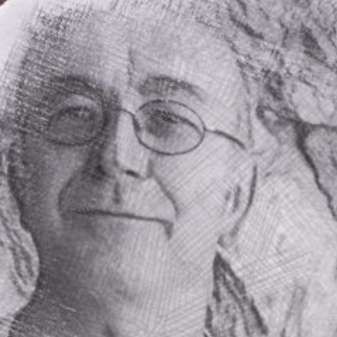The raison d’être of the Edinburgh Quartet’s “Late Sessions” is to take string quartet repertoire to those who might not yet consider a formal concert the ideal evening out.
This particular performance took place in the Lounge Bar of Teviot House, Edinburgh. The Gothic-looking students’ union, clad in lilac light, looked especially striking in the flurry of snow dampening those awaiting the approval of the bouncers. Once inside, various features contributed to the evening’s informality: free entry; a bar; a hour-long performance beginning at a student-friendly 9.00pm; non-serried soft furnishings; friendly, humorous chat from leader Tristan Gurney.
A fetching local touch informed the opening item, the 1765 Quartet in A (Kilravock no. 9) by Thomas Alexander Erskine, Sixth Earl of Kellie (1732–81). He had been musically very active in Edinburgh despite a somewhat dissolute lifestyle. However, he was not the first contentious member of the family. His father had been incarcerated in Edinburgh Castle for Jacobean sympathies. Erskine’s elegant, three-movement quartet was a winning opener. Perhaps on account of the surroundings I was reminded of Dennis Wilson’s theme music for Fawlty Towers, particularly in the closing Minuet. However, the movement which struck me most was the central Adagio. Its poignant harmonies, foreshadowing the Purcell which was to come, were very sensitively handled by the Edinburgh Quartet, allowing the movement to float, free from a confining pulse.
The local connection continued. Stargazing was commissioned by the quartet from Nigel Osborne, the then Reid Professor of Music, and founder of Edinburgh University’s Institute for Music Human and Social Development (IMHSD). The mere mention of his name occasioned such joyously affectionate whooping that it seemed many IMHSD alumni were in the house. Also in three movements, Stargazing opened with what I can only describe as slow-release counterpoint. A searching, Celtic-sounding melody began in the first violin. Resonantly, given the time-scale suggested in the title, this was eventually picked up by the second violin and, eventually, the viola. Beneath this dialogue, Mark Bailey’s cello floated timelessly up and down the harmonic series – a sound simultaneously primeval and futuristic.
Much thicker textures dominated the central movement, their lush dissonance suggesting the enormity of “what is out there”. At this point we became aware that we were, in fact, not alone and that, from somewhere between the stage and the heavens, an invasion of rhythm was at hand – or rather at foot; a ceilidh was in progress in the hall above. Those familiar with the steps of the Dashing White Sergeant may know the three foot-stamps which occupy bar 28 of each 32. Imagine a counterpoint of this moment and you’ll have some idea. This bizarre situation was embraced with winning humour by audience and quartet alike and, for me, testified to the quartet’s belief in such “outreach” events. If you hope to try new things while rejecting any surprising elements then disappointment is sure to follow. The closing movement stood a much better chance of matching the Celtic resonances overhead. In addition to the much harsher tones obtained by bowing near the bridge, it featured some heavy metal-style bare fifths on the cello’s two lowest open strings. In this rock ‘n’ roll moment, Mark Bailey tilted his instrument to allow a heavier sawing action. There was a huge cheer at the end of this piece. Perhaps some present will seek out a future performance in a more solipsistic acoustic.
Tristan Gurney joked that Britten’s Alla Marcia might better rival the parallel musical universe upstairs. This standalone movement originated as “Parade”, the penultimate movement of Les Illuminations. The closing line of Rimbaud’s text, “I alone have the key to this savage parade”, seemed to work its magic in absentia. The dancing desisted. The parade in question was a portrait of the underworld and the spirit of Britten’s angularly demonic music was admirably captured.
Purcell’s music seems to combine ancient and modern. I was therefore pleased to hear Tristan Gurney encourage the audience to listen out for his daring, troubling harmonies. Three sensitively delivered transcriptions of his Fantazias brought this eclectic programme of British music to a close. No. 11 in G major and no. 8 in D minor, both written for four viols, feature tightly woven counterpoint and very affecting harmonies in addition to sections of contrasting tempo. The fantazia “Upon One Note” in F major required the presence of a fifth member to provide the piece’s constant C. A young violinist stepped up to participate in this very moving finale, whose restless harmonic language seemed to mitigate against the likelihood of a fixed yet fitting note. However, the effect was the audio equivalent watching a chameleon in changing surroundings.
The crowd’s final cheers suggested that the quartet may have recruited some new followers.


